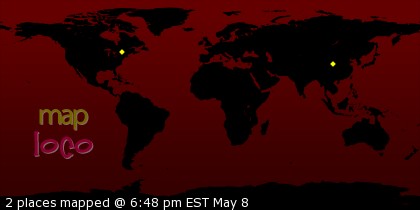From the NY Times:
Madeleine L’Engle, who in writing more than 60 books, including childhood fables, religious meditations and science fiction, weaved emotional tapestries transcending genre and generation, died Thursday in Connecticut. She was 88.
Her death, of natural causes, was announced today by her publisher, Farrar, Straus and Giroux.
Ms. L’Engle (pronounced LENG-el) was best known for her children’s classic, “A Wrinkle in Time,” which won the John Newbery Award as the best children’s book of 1963. By 2004, it had sold more than 6 million copies, was in its 67th printing and was still selling 15,000 copies a year.
Her works — poetry, plays, autobiography and books on prayer — were deeply, quixotically personal. But it was in her vivid children’s characters that readers most clearly glimpsed her passionate search for the questions that mattered most. She sometimes spoke of her writing as if she were taking dictation from her subconscious.
“Of course I’m Meg,” Ms. L’Engle said about the beloved protagonist of “A Wrinkle in Time.”
The “St. James Guide to Children’s Writers” called Ms. L’Engle “one of the truly important writers of juvenile fiction in recent decades.” Such accolades did not come from pulling punches: “Wrinkle” is one of the most banned books because of its treatment of the deity.
“It was a dark and stormy night,” it begins, repeating the line of a 19th- century novelist Edward George Bulwer-Lytton, and presaging the immortal sentence that Snoopy, the inspiration-challenged beagle of the Peanuts cartoon, would type again and again. After the opening, “Wrinkle,” quite literally, takes off. Meg Murray, with help from her psychic baby brother, uses time travel and extrasensory perception to rescue her father, a gifted scientist, from a planet controlled by the Dark Thing. She does so through the power of love.
The book used concepts that Ms. L’Engle said she had plucked from Einstein’s theory of relativity and Planck’s quantum theory, almost flaunting her frequent assertion that children’s literature is literature too difficult for adults to understand. She also characterized the book as her refutation of ideas of German theologians.
In the “Dictionary of Literary Biography,” Marygail G. Parker notes “a peculiar splendor” in Ms. L’Engle’s oeuvre, and some of that splendor is sheer literary range. “Wrinkle” is part of her series of children’s books, which includes “A Wind in the Door,” “A Swiftly Tilting Planet,” “Many Waters” and “An Acceptable Time.” The series combines elements of science fiction with insights into love and moral purpose that pervade Ms. L’Engle’s writing.
Ms. L’Engle’s other famous series of books concerned another family. The first installment, “Meet the Austins,” which appeared in 1960, portrayed an affectionate family whose members displayed enough warts to make them interesting. (Perhaps not enough for The Times Literary Supplement in London, though; it called the Austins “too good to be real.”)
By the fourth of the five Austin books, “A Ring of Endless Light,” any hint of Pollyanna was gone. Named a Newbery Honor Book in 1981, it told of a 16-year-old girl’s first experience with death. Telepathic communication with dolphins eventually helps the girl, Vicky, achieve a new understanding of things.
“The cosmic battle between light and darkness, good and evil, love and indifference, personified in the mythic fantasies of the ‘Wrinkle in Time’ series, here is waged compellingly in its rightful place: within ourselves,” Carol Van Strum wrote in The Washington Post in 1980.
Madeleine L’Engle Camp was born in Manhattan on the snowy night of Nov. 29, 1918. The only child of Madeleine Hall Barnett and Charles Wadsworth Camp, she was named for her great-grandmother, who was also named Madeleine L’Engle.
Friday, September 07, 2007
Subscribe to:
Post Comments (Atom)





No comments:
Post a Comment